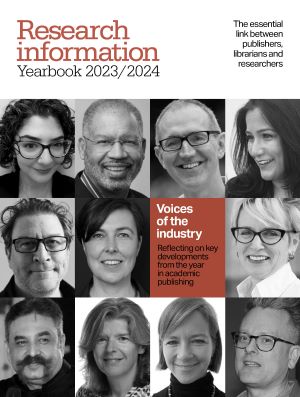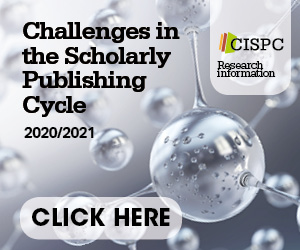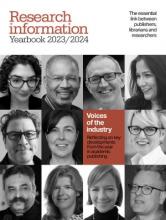Open access could prevent rejection of good science

Steve Miron, senior vice president of Wiley's Scientific, Technical, Medical and Scholarly business reveals why he is excited about the potential of open access
What trends have you seen?
We are seeing huge growth in our author base from emerging countries, not just in quantity but also in quality. Also, as publishing becomes more global, we are able to tap into a global talent base for staff and reviewers.
There are trends for societies too. For years they have looked to journals to fund their activities but with library budgets under pressure we see lots of societies wanting to develop new services for members in, for example, education and professional development. It’s early days with this but it’s a definite trend.
This is a very exciting development for Wiley, which publishes on behalf of around 800 professional and learned societies, but also is both a major educational publisher and a publisher in the area of professional development.
How have the needs of researchers changed?
In many ways, they haven’t. The need to get funding and publish in order to build a career hasn’t changed very much. And certain aspects of the publishing landscape will probably remain, for example, the importance of quality and reputation; and the importance of topical relevance to one’s communities.
Mobile access is impacting how researchers use and share content. They want to pull content into their own orbit, mine it, annotate it, link it, merge it with their personal work, and read it on their mobile device. If they switch institution they want to take their work with them. This is an opportunity for publishers to serve users but there are also challenges in understanding where to invest.
What role does open access play in research publishing?
It’s clear that open access (OA) is becoming a big trend. However, I see that for the foreseeable future we’ll live in a mixed economy with green OA, gold OA, subscription and approaches that have not been invented yet. It is fun and exciting, with many experiments by publishers.
There has been some great communication between the research community, publishers and policy makers in developing OA policy. It has been done in an enlightened, positive way but I think there’ll be some serious issues that still need to be considered.
Countries differ too. For example, there are OA advocates in China but the average researcher, and even publisher, in China is less knowledgeable about it. Things are evolving in different ways in different places too and the costs of one model versus another depend on the country.
We see encouraging signs that gold OA can support the development of new journals in important areas of research. While Wiley has had notable success in launching several new subscription titles in recent years, tight library funding has meant that in some cases, important new titles don’t achieve the broad readership they deserve.
One such example is EMBO Molecular Medicine, published on behalf of The European Molecular Biology Organisation. Launched as a conventional journal, it was building a respectable subscription base – but not as rapidly as journals of such high quality would have done in previous times. With EMBO’s encouragement and support, we converted it to an OA journal for 2012. The early signs are that this will be a successful transition with uninterrupted submission of excellent manuscripts and an IF of over 10.
Another gold OA success story is our launch of Ecology & Evolution. Within a year of launching, this journal has accepted over 300 papers based on both direct submissions and a referral mechanism from other journals published by Wiley.
How might relationships between researchers and publishers be improved?
We work hard to nurture and maintain a positive relationship with researchers and libraries. No relationship is without some tension or disagreement but we do actively listen to authors, whether what they say is positive or negative.
There has been an issue of a disconnect between library funding and the huge increase we’ve seen in R&D funding, which in turn delivers more content. We are seeing submission growth of around 10 per cent every year and 20-30 per cent usage growth year-on-year. There is a huge demand but the funding for libraries hasn’t kept pace with that.
We get around 450,000 article submissions a year and publish about a third of them. Some good science is not being published because the materials budgets do not keep pace with R&D spend. I hope as funded OA becomes more part of the scholarly landscape these tensions are addressed and that budgets for publications will be more aligned with the R&D spend.
Interview by Siân Harris






